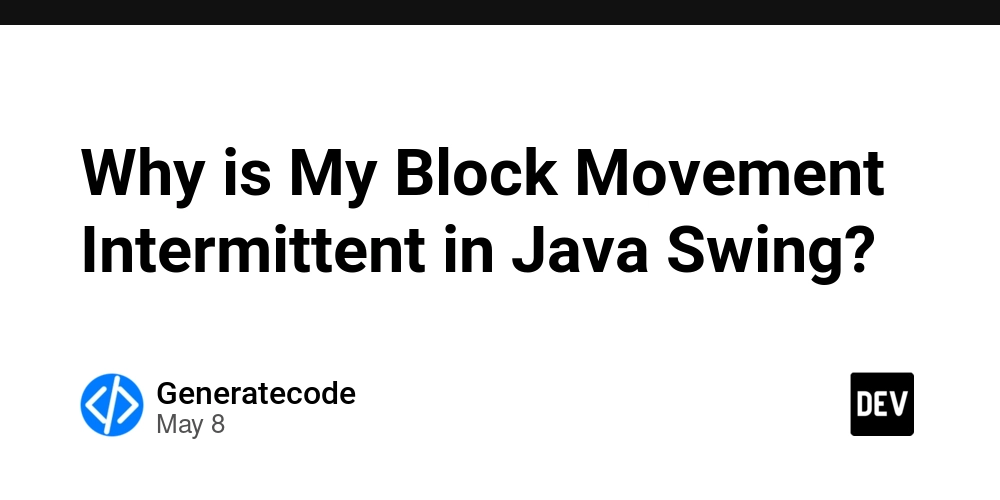DBSCAN: Finding Cluster of any shape
Exploring how DBSCAN uses density, not distance, to find clusters of any shape from theory and code to real-world applications like anomaly detection and geospatial mapping. Before diving into the code or real-world applications, it’s essential to understand what DBSCAN actually is and why it stands apart from traditional clustering techniques. What is DBSCAN At its core, DBSCAN short for Density-Based Spatial Clustering of Applications with Noise is a powerful algorithm that clusters data not based on shape or center points, but on the density of data points in a region. Let’s break down the key concepts that make DBSCAN unique. Density-Based Clustering : Instead of grouping points based of distance from a center(like K-MEANS). This algorithm groups points based on how crowded a region is No need for predefined number of clusters : Unlike k-means which needs to figure out the number of clusters. DBSCAN is able to get the different clusters based on density of points in a region It is like traversing through all the points noting the number of times you encountered regions of high density Identifies Noise and Outliers : DBSCAN is able to naturally identifies points that do not belong to any cluster like isolated data or anomalies . these are labelled as noise and hence a good tool for anomaly detection It can find clusters of any shape : It is not limited to circular or spherical clusters. It is able to detect clusters of any shape like spirals and other complex irregular shapes Core, Border, and Noise Points : DBSCAN classifies points into 3 types Types of Points in DBSCAN Core points : Have enough neighbors nearby (defined by ε and MinPts). ε is a defined distance used to determine the neighbors of a given point and MinPts is the minimum number of neighbor a core point must have to form a dense region Border points : Close to a core point but not dense enough on their own. Noise points : Points that are not close to any dense region. Code implementation 1.using numpy ALGORITHM According to this algorithm a cluster is a continious region of high density(contains certain number of points whose distant from core point is less that a certain number ε -For each instance(point) counts how many instances are located within a small distance ε (epsilon) from it. This region is called the instance’s ε- neighborhood. -If an instance has at least MinPts instances in its ε-neighborhood (including itself), then it is considered a core instance. In other words, core instances are those that are located in dense regions. -All instances in the same neighborhood will be assigned to the same cluster. this neighborhood may contain points that are core points to other neighborhoods -Any instance that is not a core instance and does not have one in its neighborhood is considered an anomaly.

Exploring how DBSCAN uses density, not distance, to find clusters of any shape from theory and code to real-world applications like anomaly detection and geospatial mapping.
Before diving into the code or real-world applications, it’s essential to understand what DBSCAN actually is and why it stands apart from traditional clustering techniques.
What is DBSCAN
At its core, DBSCAN short for Density-Based Spatial Clustering of Applications with Noise is a powerful algorithm that clusters data not based on shape or center points, but on the density of data points in a region. Let’s break down the key concepts that make DBSCAN unique.
Density-Based Clustering : Instead of grouping points based of distance from a center(like K-MEANS). This algorithm groups points based on how crowded a region is
No need for predefined number of clusters : Unlike k-means which needs to figure out the number of clusters. DBSCAN is able to get the different clusters based on density of points in a region
It is like traversing through all the points noting the number of times you encountered regions of high density
Identifies Noise and Outliers : DBSCAN is able to naturally identifies points that do not belong to any cluster like isolated data or anomalies . these are labelled as noise and hence a good tool for anomaly detection
It can find clusters of any shape : It is not limited to circular or spherical clusters. It is able to detect clusters of any shape like spirals and other complex irregular shapes
Core, Border, and Noise Points : DBSCAN classifies points into 3 types
Types of Points in DBSCAN
Core points : Have enough neighbors nearby (defined by ε and MinPts). ε is a defined distance used to determine the neighbors of a given point and MinPts is the minimum number of neighbor a core point must have to form a dense region
Border points : Close to a core point but not dense enough on their own.
Noise points : Points that are not close to any dense region.
Code implementation
1.using numpy
- ALGORITHM According to this algorithm a cluster is a continious region of high density(contains certain number of points whose distant from core point is less that a certain number ε
-For each instance(point) counts how many instances are located within a small distance ε (epsilon) from it. This region is called the instance’s ε- neighborhood.
-If an instance has at least MinPts instances in its ε-neighborhood (including itself), then it is considered a core instance. In other words, core instances are those that are located in dense regions.
-All instances in the same neighborhood will be assigned to the same cluster. this neighborhood may contain points that are core points to other neighborhoods
-Any instance that is not a core instance and does not have one in its neighborhood is considered an anomaly.









































































































































































![[The AI Show Episode 146]: Rise of “AI-First” Companies, AI Job Disruption, GPT-4o Update Gets Rolled Back, How Big Consulting Firms Use AI, and Meta AI App](https://www.marketingaiinstitute.com/hubfs/ep%20146%20cover.png)


























































































































![[DEALS] The Premium Python Programming PCEP Certification Prep Bundle (67% off) & Other Deals Up To 98% Off – Offers End Soon!](https://www.javacodegeeks.com/wp-content/uploads/2012/12/jcg-logo.jpg)














































































































































_Aleksey_Funtap_Alamy.jpg?width=1280&auto=webp&quality=80&disable=upscale#)
_Sergey_Tarasov_Alamy.jpg?width=1280&auto=webp&quality=80&disable=upscale#)











































































































![Apple Foldable iPhone to Feature New Display Tech, 19% Thinner Panel [Rumor]](https://www.iclarified.com/images/news/97271/97271/97271-640.jpg)
![Apple Developing New Chips for Smart Glasses, Macs, AI Servers [Report]](https://www.iclarified.com/images/news/97269/97269/97269-640.jpg)
![Apple Shares New Mother's Day Ad: 'A Gift for Mom' [Video]](https://www.iclarified.com/images/news/97267/97267/97267-640.jpg)
![Apple Shares Official Trailer for 'Stick' Starring Owen Wilson [Video]](https://www.iclarified.com/images/news/97264/97264/97264-640.jpg)







































































































